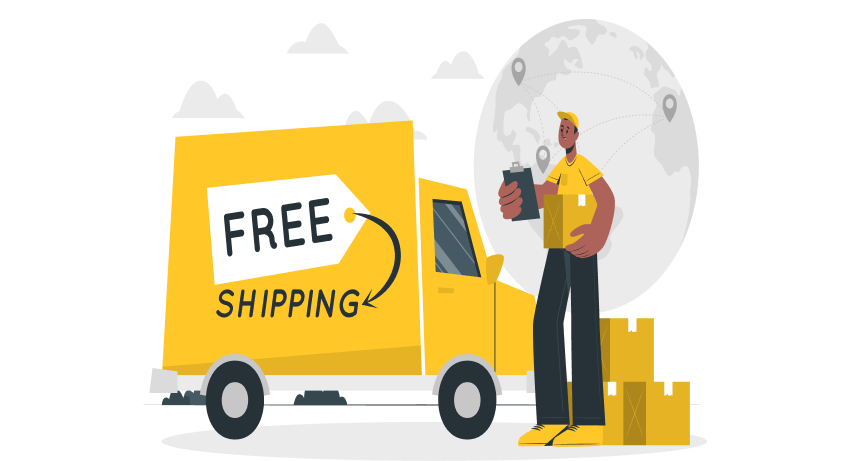Ecommerce has been growing steadily over the past years. That’s why thousands of marketing experts are trying to develop new approaches, tactics, and strategies to attract new customers and improve their conversion rate.
If you are an Ecommerce business owner, you already know what it takes to convert your visitors into buyers. However, if you need to make more profit, you should test some of these creative Ecommerce hacks to increase sales in 2023.
Let’s get started!
1. Optimize your product page
The product page is where you can make a difference in your Ecommerce business. According to reports, a well-optimized product page can increase your conversion rate by as much as 7.91%.
If you’re looking for some quick wins, here are a few things to consider:
- Your product photos. Make sure they are high quality and show off the best features of your product. Also, try to get multiple angles of the product so customers can see it from every angle.
- The title and description. Use keywords that people would search for when looking for similar products, but don’t stuff them in!
- Add bullet points to each key point about the product so people can easily scan through them quickly without reading through paragraphs of text.
2. Offer free shipping
A recent study showed that free shipping is the top motivator for customers to purchase. Nearly two-thirds of online shoppers expect free shipping on every purchase.
Free shipping is a major factor in many people’s shopping habits, and it’s not hard to see why: who wouldn’t want to get their products for free? But it’s also a compelling and easy-to-understand value proposition for your customers, which you can use as a tool to drive more sales.
It might sound counterintuitive, but giving away something for free increases the perceived value of your product—it makes them feel like they’re getting something better than what they were expecting.
And when you offer free shipping with every purchase, even if it’s just on your first order, you’ll start building customer trust and loyalty before your customers even walk through the door.
3. Use upsell and cross-sell techniques
When making a purchase online, you don’t just want what you came for. You also want everything else your eyes fall on. That’s why it’s important to use upsell and cross-sell techniques to give them what they want. According to a HubSpot survey, upselling and cross-selling are very effective in increasing the amount of revenue generated.
Upselling is the process of offering an upgraded version of a product or service that’s already being purchased, while cross-selling involves offering complementary products or services.
For example, if someone buys a new computer monitor, they’ll be more likely to buy a new keyboard. This is because they see the value in having both items rather than just one—and it gives them confidence that their purchase will be useful in the long run.
You can use this same principle when selling products on your Ecommerce site: by telling customers about all the other things they can buy with their initial purchase, you’ll get more sales overall!
4. Create urgency
Urgency is a powerful tool in marketing. It can be used to drive traffic and sales, or it can be used to encourage people to take action now. Either way, it’s one of the most effective ways to get people moving. And Ecommerce stores are no different!
Make sure your customers know what time of year it is by reminding them that they’ll miss out on a great deal if they don’t buy now. You can do this by saying something like, “Only X left in stock.” Or “Limited time offer” is a great way to create a sense of urgency without lying.
Every time customers open your site, ensure you’re showing them the available limited-time offers so they’ll feel compelled to act quickly (and spend money!).
5. Personalize the customer experience.
We want to feel like we’re getting a special deal, so if you’re running an online store, personalize the customer experience with a unique discount or coupon code for each customer. It’s been found that 56% of online shoppers are more likely to return to a website offering a personalized recommendation.
Ensure you don’t go overboard and get flagged as spam by your customers’ email providers. Here are some ways you can personalize:
- Include a customer’s name in emails, receipts, and product pages.
- Use data about previous purchases to make recommendations and suggestions for future purchases based on what other customers with similar interests have bought (and liked).
- Use data about location and time of day to show different offers at different times of the day or in different locations.
6. Offer a loyalty program.
Your customers are the lifeblood of your business, but it’s easy to forget that they don’t exist just because you want them to. Instead, they’re busy people with lives and jobs, and they don’t have time to remember every single thing they buy from you. But what if there was a way for them to be rewarded for their loyalty?
Offering a loyalty program is an easy way to give back to your customers by rewarding them for their repeat business—and it can also help you improve sales. If you’re not offering a loyalty program yet, here are some things to consider when setting up your own:
- Create a set of rules (how often do they have to come back before they can sign up? What kind of rewards will they earn?)
- Make sure your customers know about the program (put up posters in store windows or send out emails)
- Keep track of memberships (so you know who’s active!)
7. Make checkout easy and fast
It’s no secret that speed is one of the most important factors in online shopping, especially when making a purchase. If you can’t get someone to your site and take care of business quickly, they’ll move on to the next thing in their search results, or worse: they’ll abandon their cart altogether.
Luckily, there are a few things you can do to make your checkout process as fast as possible. First and foremost, you should ensure that your site loads quickly for everyone—not just those with high-speed connections or a fast computer!
If you’re using images on your site, ensure they’re optimized for speed, so they don’t hold up page loading time (and remember about using CSS sprites!
Another thing you can do is offer multiple payment options. For example, if someone wants to use PayPal but still needs an account with them, allow them to sign up directly from your site while they’re checking out instead of having them leave mid-purchase so that they can start over somewhere else entirely.
8. Provide excellent customer service
You need to provide great customer service to make your customers feel like they never have to worry about their orders. This goes beyond simply answering their questions or responding to them on time.
Studies have shown that providing excellent customer service can be one of the most effective ways to increase sales. According to reports, brands that excel in customer experience bring in 5.7 times more revenue than brands with poor customer experience.
It means making sure that when they need help, you’re there for them. You can offer 24/7 support via email, phone call, or live chat. You should also ensure that all your employees are well-trained to answer any questions during the ordering process or after an order has been placed.
9. Use social proof
Social proof is a powerful tool in the world of ecommerce. It’s simple: people want to know what others think before buying. If you show that your product has been reviewed or recommended by others, you’re helping your customers make a more informed decision.
The best place to get social proof for your products is from the website or store where you sell them. If you have a review section on your store, make sure it’s easy for customers to find and read through. Here are a few more ways you can use social proof :
- Showcase user reviews on your landing pages, especially when they’re positive.
- Showcase how many people have visited your page, downloaded an e-book, etc.
- Showcase how much time has passed since you launched a new product or feature.
- Showcase testimonials from customers who have experienced success with your business.
If you don’t have a review section, add a “customer reviews” tab on your product pages so that customers know where to go if they want to see what other people think about it.
In addition to using customer reviews on the website or store where you sell your products, don’t forget about social media! Most people will look at social media before making any purchase decision nowadays, so take advantage of this by posting pictures of what other people have bought and loved (and hated).
10. Continuously test and optimize
We all know that Ecommerce is a numbers game, and the more data you have, the better equipped you are to make informed decisions. So if you want to improve your sales, it’s crucial that you continuously test and optimize. You need to constantly look at what’s working and what isn’t, so you can shift gears when necessary and make changes accordingly.
Testing is a great way to figure out what works and what doesn’t, and it’s an ongoing process that will help you get better results every day.
To see what works best, you can test new products, marketing tactics, and site designs. Don’t be afraid to try something new! If you’re not testing regularly, you’re missing out on opportunities to improve your sales and increase customer satisfaction.
Every little change can impact your sales numbers, so you must stay on top of the latest trends in website design and user experience to ensure your site is optimized for conversion rates.
Wrapping Up!
The biggest takeaway from this post is that there are many different ways to approach your Ecommerce store.
As such, you shouldn’t be afraid to experiment with new concepts and niches. Your store may become wildly successful because of that, even if it isn’t what it seems from the outset.
So, let’s look at each of these different sales tricks for Ecommerce sites and see how they measure up.

















